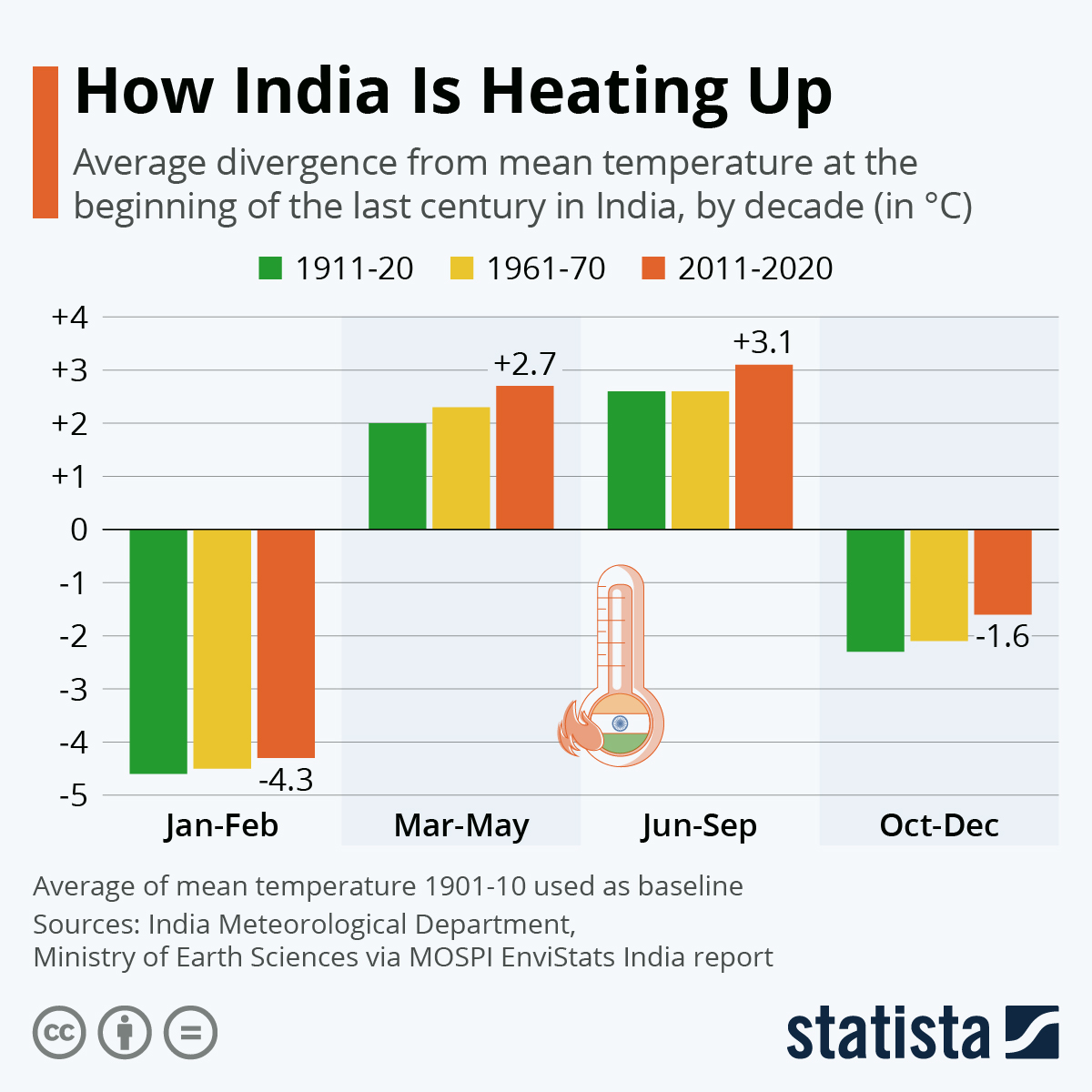Northern India is in the grip of a major heatwave. With temperatures close to 45° Celsius, authorities have warned those aged over 60 and people suffering various maladies to stay indoors during the day. While extreme heat events have always happened, it is their more frequent, more prolonged and more intense characteristics that indicate the effects of climate change. As recently as April this year, India and Pakistan experienced a heatwave which was described by an IPCC researcher as "testing the limits of human survivability".
Looking at mean temperature records in India since 1901, it is apparent that the country has become hotter as the decades have gone by. Compared to the average of mean temperature between 1901 and 1910 - 25.16° Celsius -, winters have gradually become warmer, while summer - and spring - heat has increased. While January and February temperatures were still 4.6° Celsius below the 1901-10 average in 1911-20, that had decreased to 4.3° Celsius on average in 2011-20. While in 1911-20, summer temps diverged by 2.6° C, they most recently exceeded the old average by 3.1° C. Spring (March-May) actually saw the biggest average increase in mean temperature in the given time frame - from a 2.0° C divergence in 1911-20 to a 2.7° C divergence only 100 years later.





















